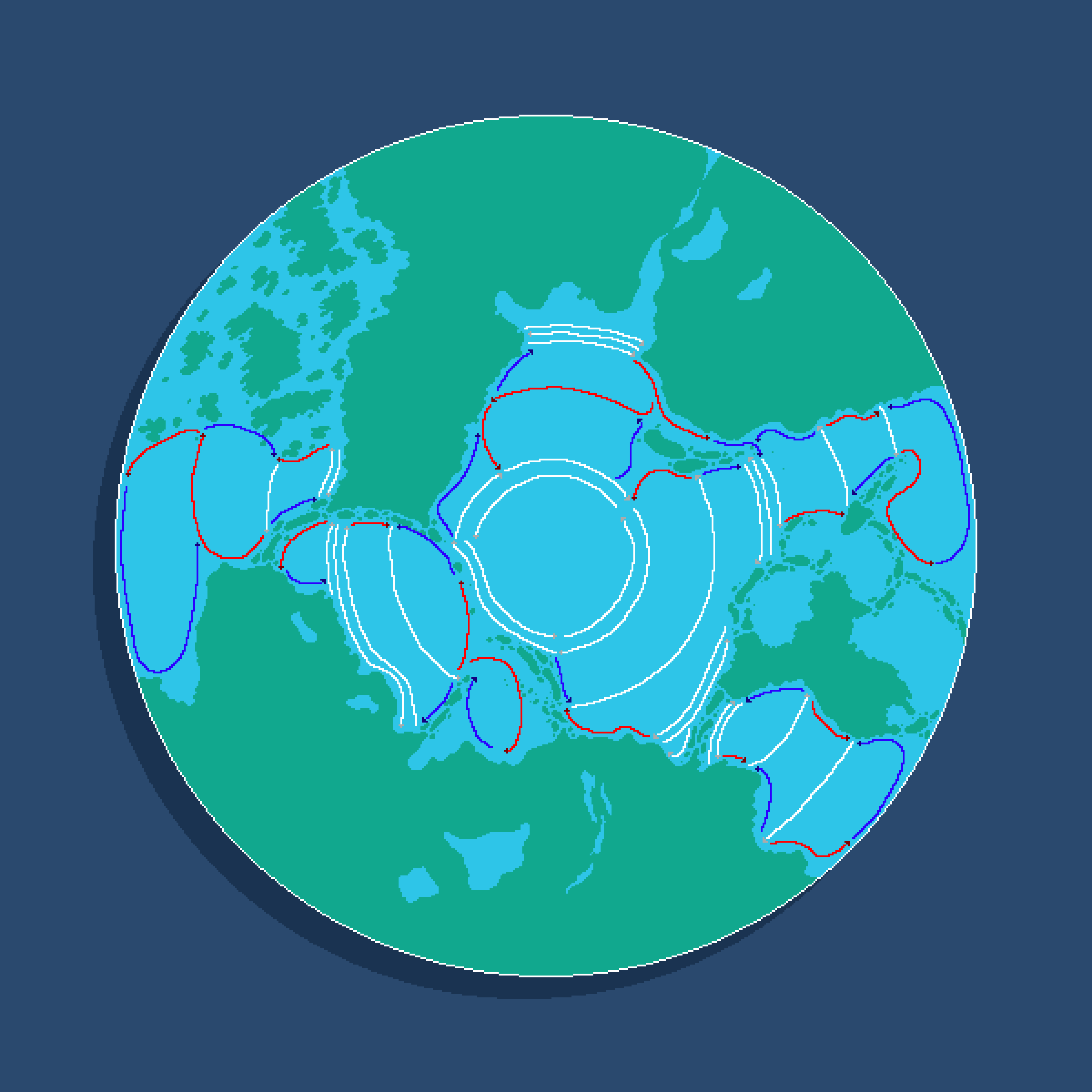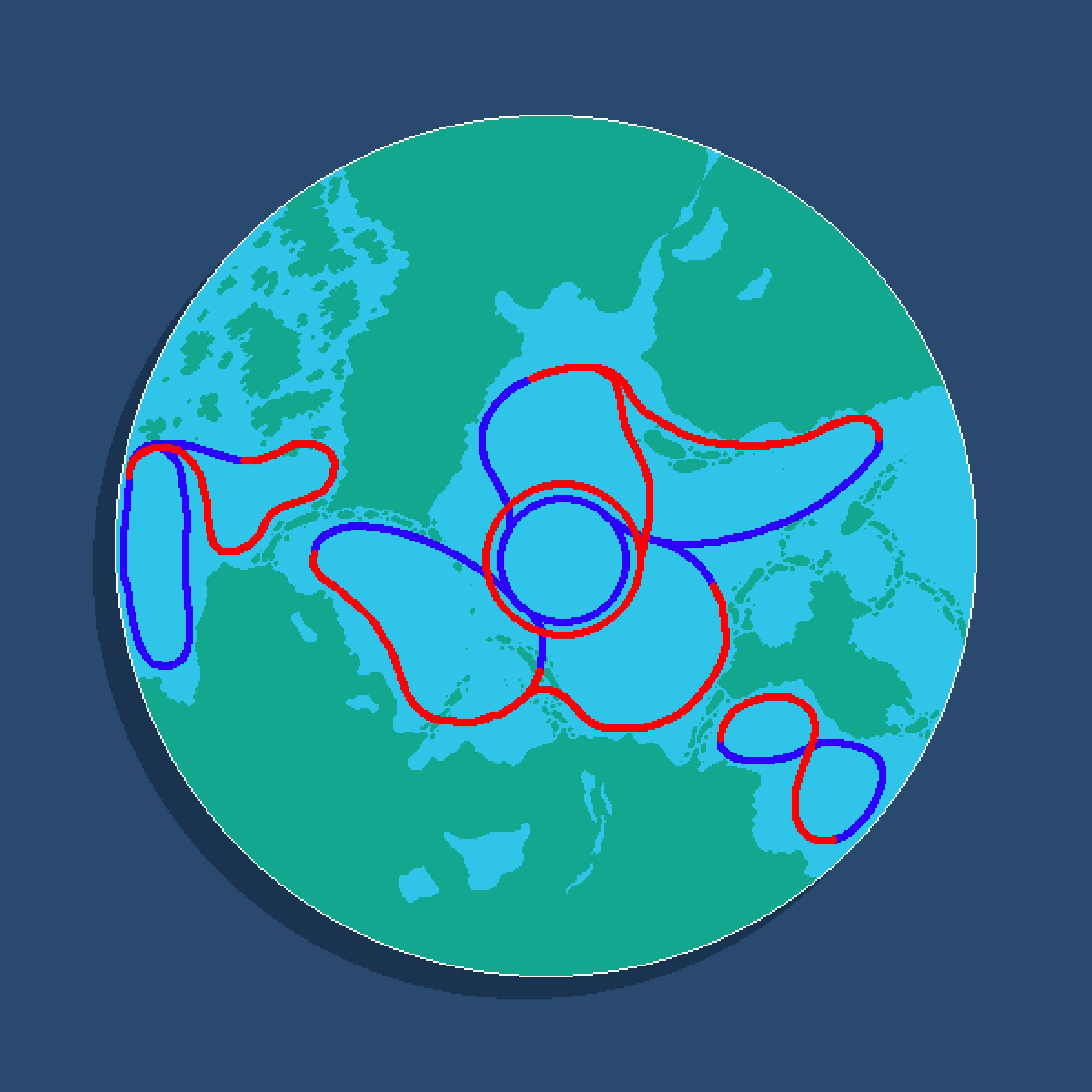Oceanic circulation is the physical process by which the water of the Plane’s oceans circulates. Oceanic circulation across the Plane is driven by atmospheric circulation, ocean density, and temperature. Oceanic circulation plays a particularly key role in the Plane’s weather, maintaining the distribution of the Plane’s heat.
Oceanic circulation is commonly divided into two categories, surface circulation driven by atmospheric circulation, and deep circulation driven by density gradients across the Plane.
Surface circulation comes in the form of gyres1, circular surface currents driven by a mix of atmospheric circulation and gravity from the Harmonic Treaty. Gyres drive warm water from regions close to the harmony line towards the edge and pole of the Plane, and inversely drive cold water from those regions back towards the harmony line. Surface level circulation greatly impacts the Planes climate and weather, moderating costal temperatures.
Deep circulation comes in the form of the thermohaline2. Believed to be driven by density gradients in the ocean caused by varying temperatures and salinity. As cold, salty water sinks at the pole and edge it moves back towards the harmony line, moving across the sea floor and bringing nutrients with it. As it nears the harmony line and deposits salt on the ocean floor it begins to warm and rise. This process creates a cyclical pattern which helps distribute nutrients through the Plane’s ocean.
See Also
This article is considered complete for the moment, but is missing sections which can be elaborated on as the setting develops! If you think it needs expansion now, suggest an edit through a GitHub issue!
This page could use a section on the history of its discovery.

